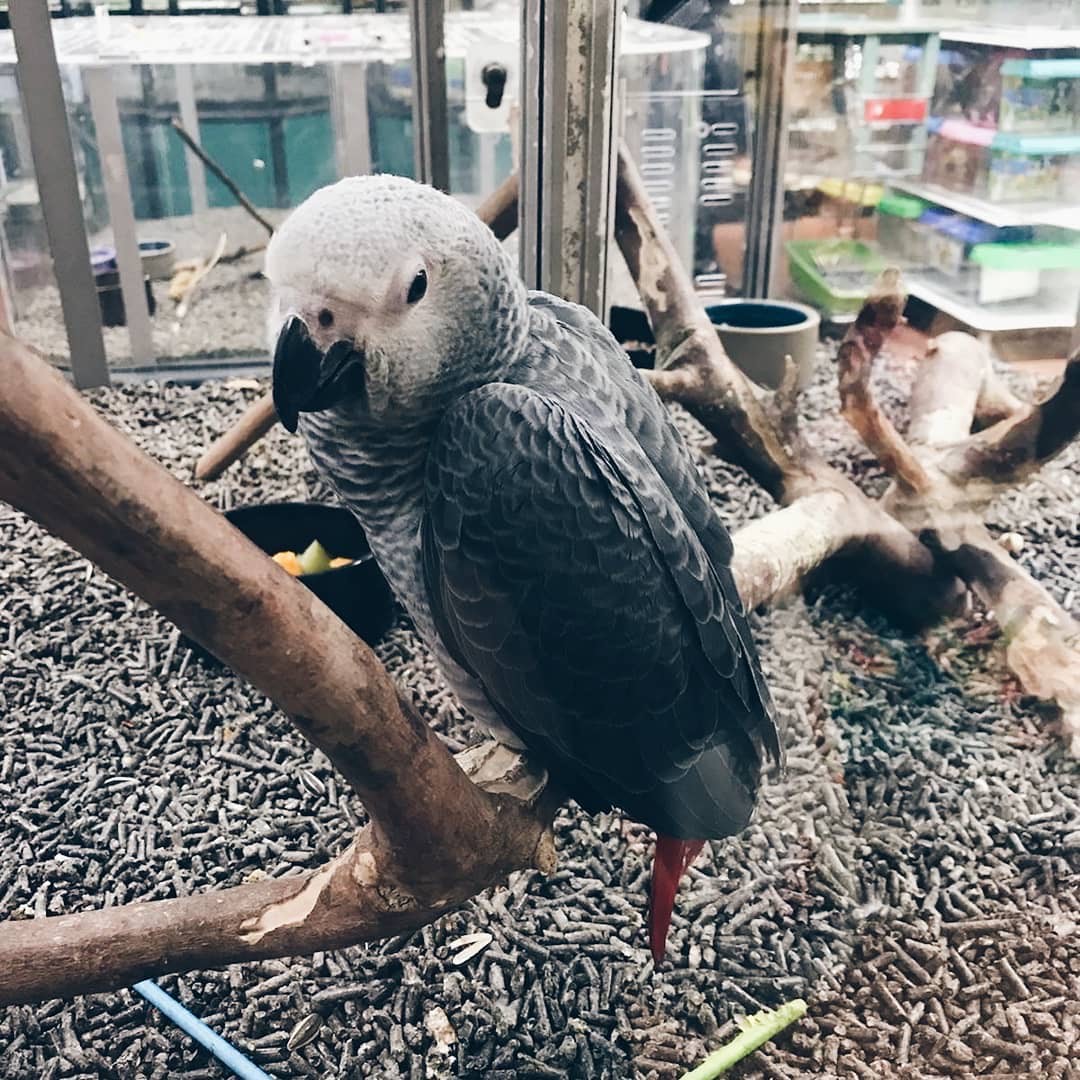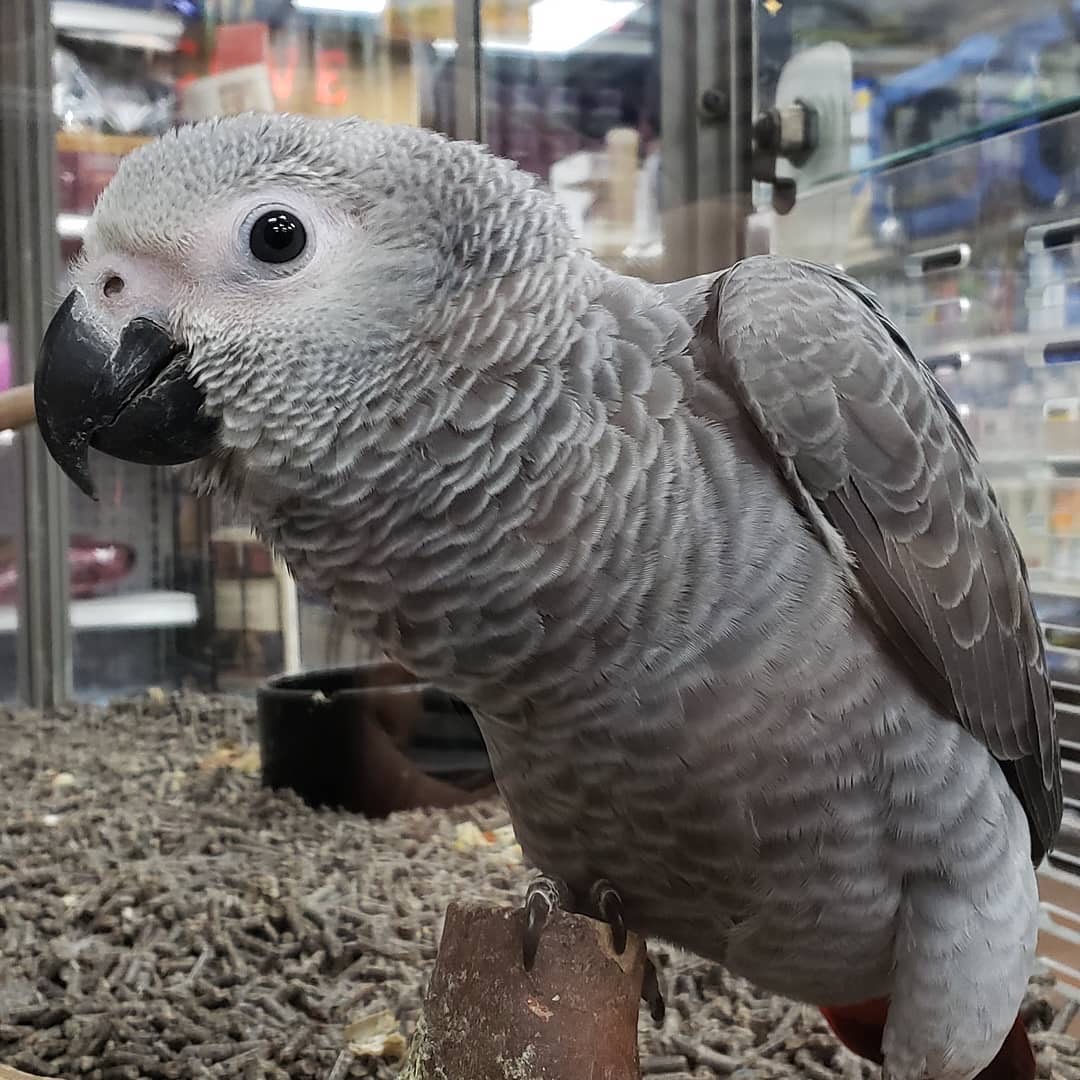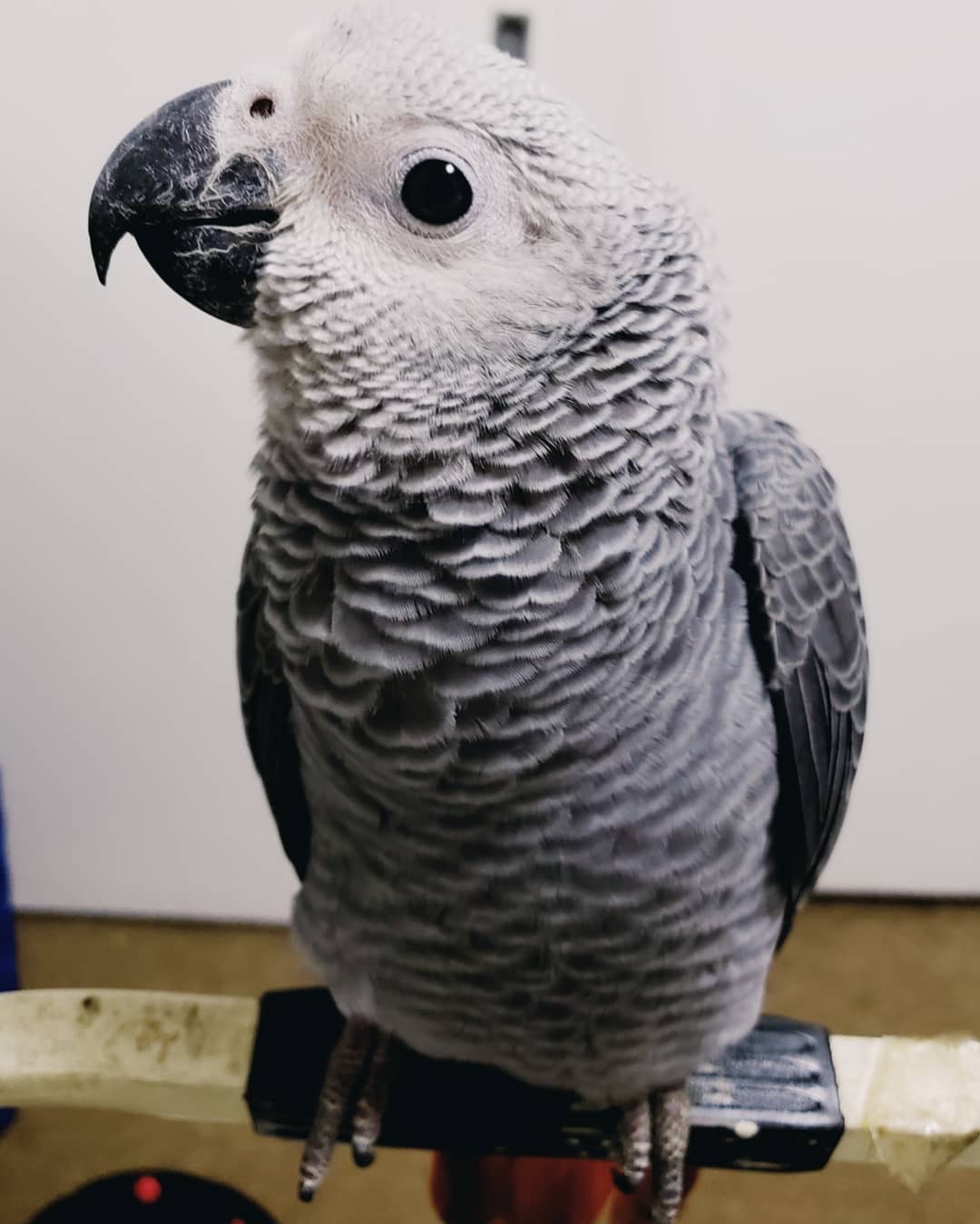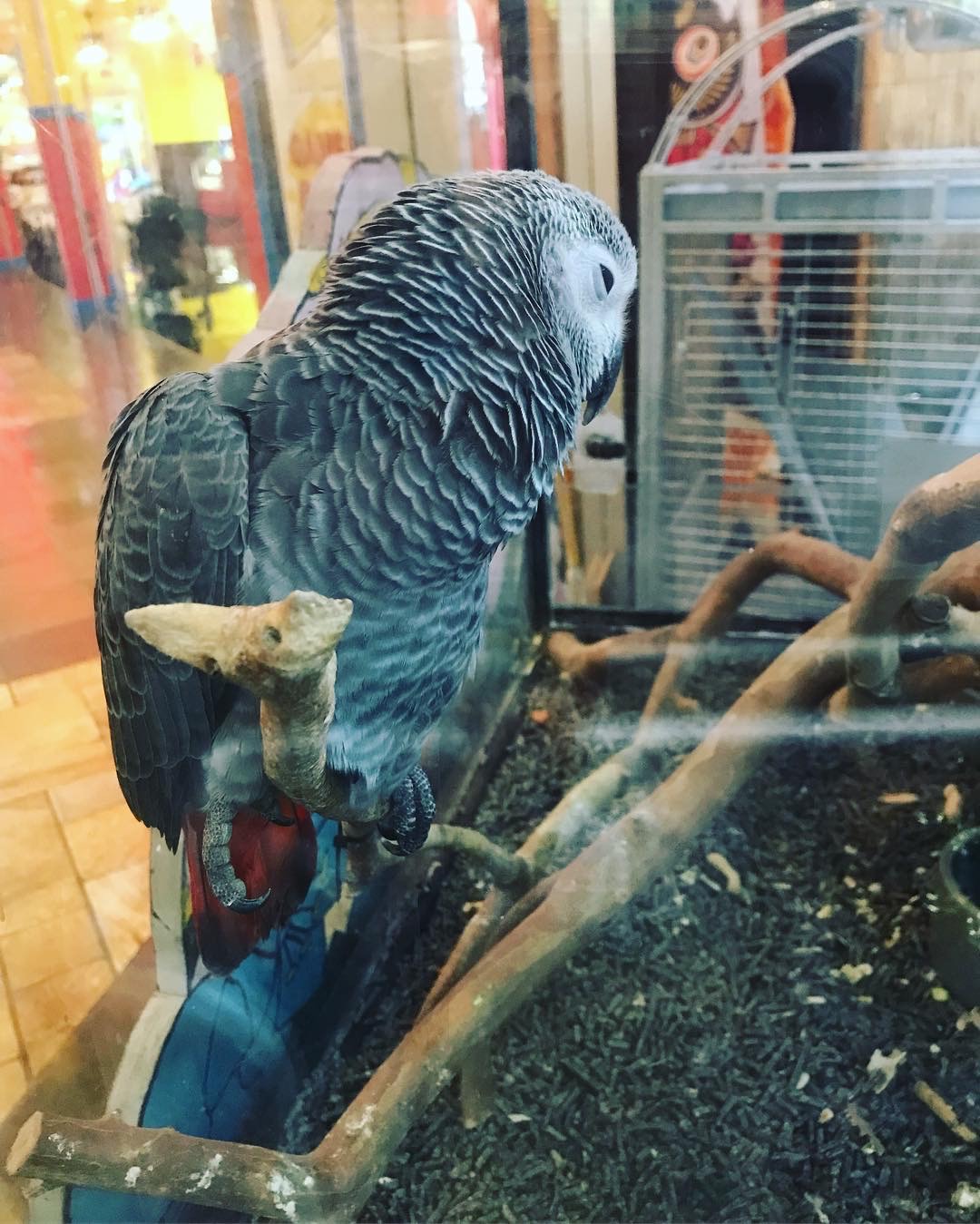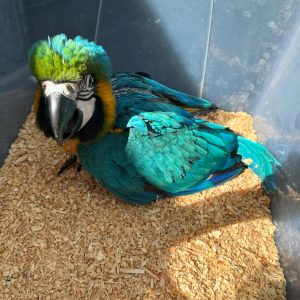Mental & Emotional Development
-
Rapid learning phase: He’s absorbing everything around him — sounds, routines, people. This is a critical imprinting stage, where your interactions help shape his long-term personality.
-
Testing boundaries: Young males may start experimenting with light dominance behaviors, such as asserting which perches or toys are “his.” It’s not aggressive — it’s exploratory.
-
Starting to mimic: While most African Greys don’t start speaking fluently until 10–18 months, some males begin mimicking simple words or household sounds earlier than females.
🐦 Temperament Traits
-
Curious and playful: He may be more adventurous than a same-age female, trying new toys faster or exploring new parts of his environment.
-
Energetic and alert: Young males tend to be a bit more physically active, flapping, climbing, or engaging in rougher play.
-
Independent yet social: He may not want to be held all the time but still enjoys being around his bonded human and is quick to observe and learn from them.
-
Mildly stubborn: A little “teenager attitude” can show up early in some males. If he doesn’t want to step up, he might resist — not out of fear, but just to see what happens.
🪶 Typical Behaviors
-
Climbing and exploring: He’ll want to test every perch, toy, or cage bar. Beak exploration is common.
-
Beak play: He may nibble fingers or gently test your limits. This is normal — it’s how young Greys interact — but it should be redirected calmly to avoid future biting.
-
Vocal development: Expect whistles, clicks, squawks, and maybe even first attempts at mimicking words or household sounds (microwave beeps, laughter, etc.).
-
Chewing everything: Chew toys are a must. Destroying things is a healthy behavior for his beak and mental stimulation.
👦🏼 Male-Specific Tendencies at 6 Months (Generalized):
While not all males behave the same, some common male traits may begin to surface now:
-
Slightly more confident and assertive in new situations
-
Tends to play more roughly with toys or cage furniture
-
May show early signs of being “territorial” with preferred toys or perches
-
Faster to “test” their human with mini power plays (like refusing to step up, mock lunges, etc.)
🧘 Tips for Managing a 6-Month-Old Male African Grey
-
Start structured training: Teach commands like “step up,” “no,” and “come.” Use positive reinforcement — males often respond very well to food rewards and praise.
-
Set boundaries early: If he nips or refuses to cooperate, stay calm and consistent. Avoid reinforcing bad behavior with attention or retreat.
-
Enrich his environment: Rotate toys weekly. Offer a mix of foraging, chewing, and puzzle toys.
-
Encourage gentle handling: Daily, respectful contact will help him grow into a confident but well-socialized bird.
-
Be patient and observant: Young Greys learn fast, but they’re also sensitive. Watch for fear signs and avoid pushing too far too fast.
⚠️ Watch Out For
-
Early biting habits: If he starts getting too nippy, correct it gently now to avoid future aggression.
-
Over-assertiveness: Redirect him if he starts lunging or guarding items. This isn’t dominance — it’s inexperience.
-
Boredom: An under-stimulated male Grey can become vocal, destructive, or withdrawn. Keep him mentally busy.
🐾 Personality
-
Bold, curious, and a little mischievous
-
Highly intelligent and observant
-
More active and daring than his female counterpart
-
Quick to test boundaries, but quick to bond if handled well
-
Loyal to “his person,” but beginning to show independence
✅ Daily Interaction Goals
-
30–60 minutes of out-of-cage time
-
10–15 minutes of training or trick play
-
A variety of toys rotated weekly
-
Quiet bonding time (head scratches or perching near you)
